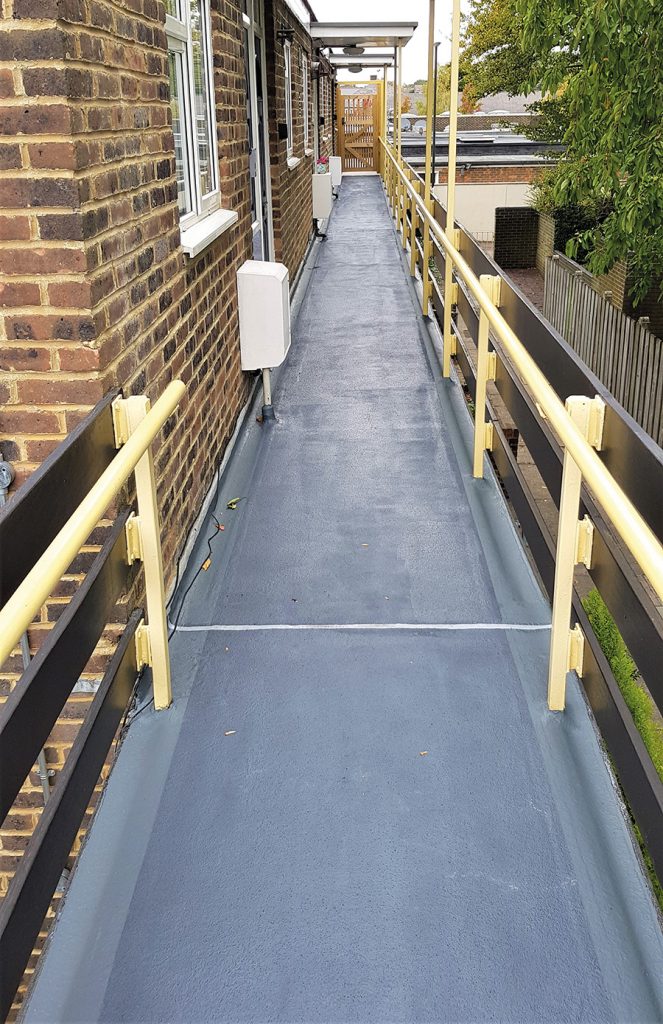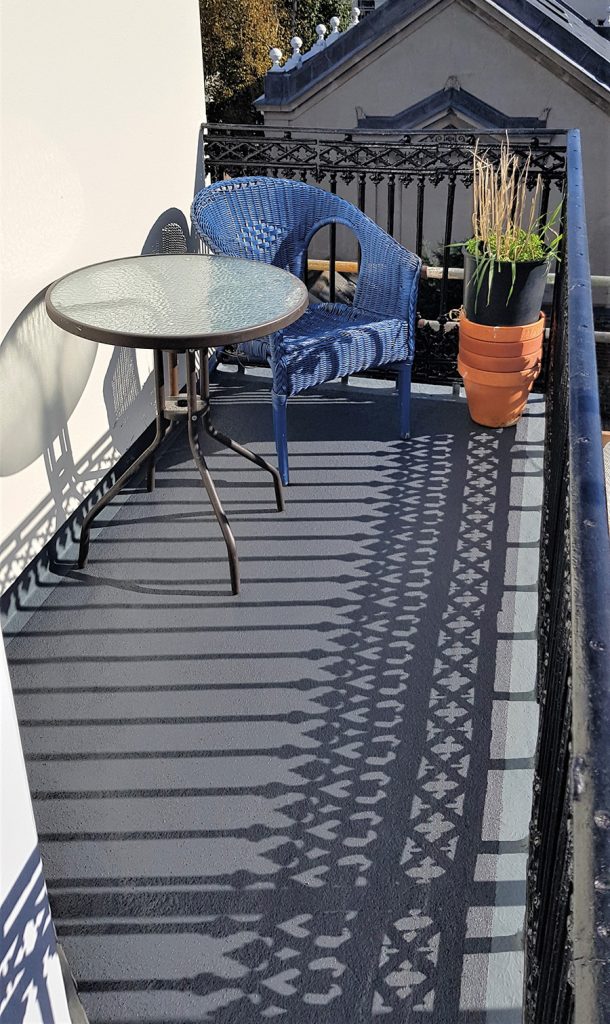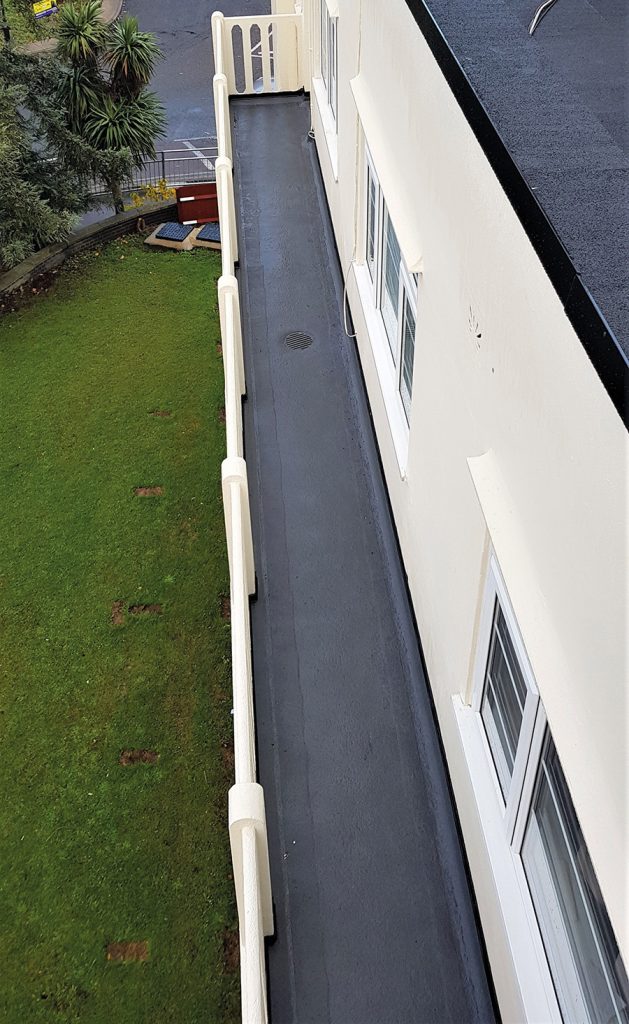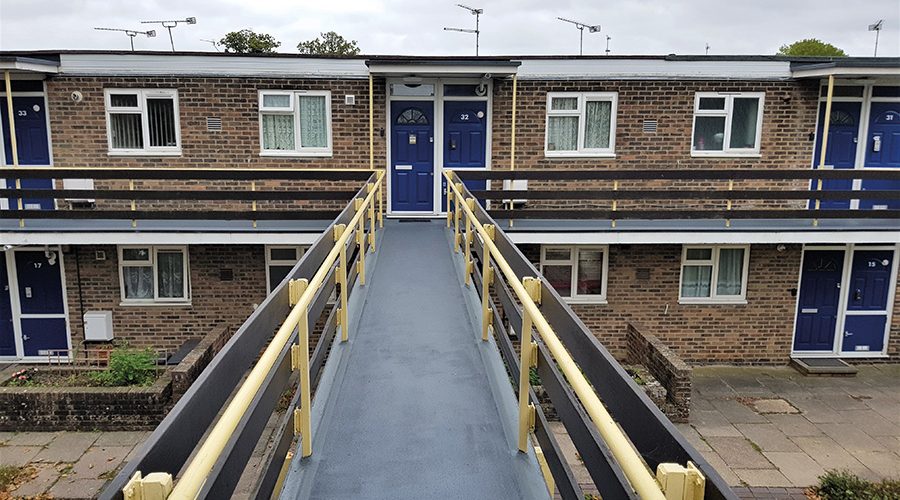As we rapidly turn into a nation of apartment dwellers, particularly within our major cities, then balconies, flat roofs and service areas such as walkways and stairwells have grown in importance. With fewer gardens, such spaces have provided endless opportunities for residents who have turned them into places for drying the washing, growing plants and flowers, an area for some well-earned fresh air and much more, says Justin Pitman, Sales Director for Proteus Waterproofing.
Proteus Waterproofing
Sooner or later those roofs, balconies and other communal areas need refurbishing or waterproofing, and by their very nature in such confined spaces, it can cause massive problems for residents who have to contend with significant disruption, pollution or in some cases, the prospect of having to leave their homes.
It could be why cold-applied liquid solutions are rapidly becoming the waterproof membranes of choice – particularly for local authorities and housing associations that are frequently faced with the dilemma of delivering essential refurbishment without upsetting tenants and other residents. Cold-applied also ticks all the boxes for local authority landlords understandably anxious to keep fire risk to the minimum.
Refurbishing an apartment block is not just simply a case of overlaying a new waterproof membrane in a few hours. The old decking or waterproof layer frequently has to be removed, and when the new membrane is applied, the devil is in the detailing – which is time-consuming, very disruptive and, depending on the product you use, creates a lot of offensive odours.
Fortunately, there are now waterproofing solutions for roofs, balconies and walkways that both residents and building owners will welcome. They are virtually odour-free so no more nasty fumes, can be installed and ready to walk on in under two hours so minimum disruption and best of all – they are a lot less expensive – a total win-win.
The secret is in the seamless application; for so long enjoyed by mastic asphalt and hot melt products. While both are excellent for most types of flat roof and walkway applications, many landlords are now unwilling to accept molten products, even though the risk of fire is negligible. Higher costs, particularly
with mastic asphalt, are also a factor.



The devil is in the detail
Cold-applied systems have taken the lead by offering other advantages over traditional types of waterproofing. As well as offering a ‘safer’ application, the liquid coating can be used to deliver a seamless finish as it forms a permanently elastic, seamless membrane. Ideal for the long-term waterproofing of complex roof details around pipes, upstands and gutters, the system is a popular specification for contemporary roofing projects where penetrations are becoming ever more prevalent.
In recent years, we have seen more and more projects requiring intricate detailing works around rooftop penetrations. Cold-applied systems minimise the element of risk associated with torch-on applications with no naked flames or boilers involved at any time with the installation process. Many liquid-applied systems also exhibit extremely low odour, making for a quick, simple and safe-to-apply waterproofing solution, particularly when you have an application in confined spaces such as balconies, walkways or other hard-to-reach areas.
Other factors such as the time to complete a contract also have to be taken into consideration particularly with budgets under increasing pressure. This particularly applies to new builds.
In the past, some of that downtime, particularly the need to wait 28 days for green concrete to cure, has been unavoidable – or at least that was the case – until now. All that has changed following the launch of new types of waterproof membrane – that are expected to revolutionise the construction industry.
Getting other trades on site as quickly as possible is frequently delayed until the building has been waterproofed and conventional wisdom has always dictated the 28-day rule for green concrete but the new cold-applied boys in town can be laid within three days of the concrete being installed allowing the building to be waterproofed some 24 hours later. This will help to significantly reduce costs in the public sector as the Government releases more funds for social housing.
So whether it’s new build or refurbishment, then cold-applied liquid solutions are leading the way and as we build more and more flats and apartments and renew existing buildings then we are going to need waterproofing solutions that can rapidly deliver with the minimum of disruption – the future is liquid.






